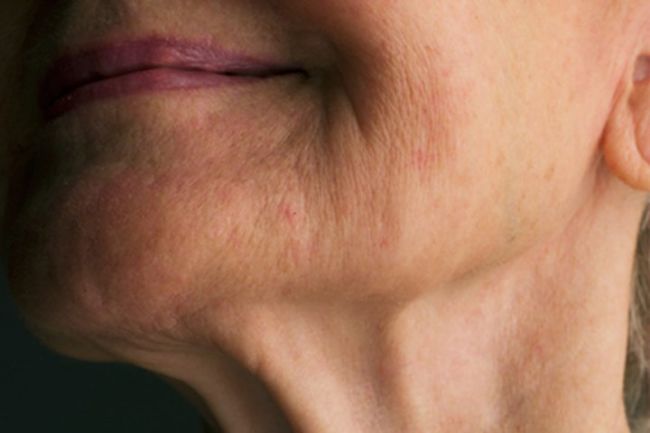Eye pain is the puncture sensation, diffuse or pulsatile limited to the eye that can be a representation of involvement of the cornea, of spaces other than the organ itself or of the organism in general.

When there is eye pain, the main involvement is of the cornea which is the transparent membrane that is in front of the iris and the pupil in the front of the eyeball. Another common manifestation of eye pain is the sensation of a foreign body or a slight irritation in the eye.
On the other hand, disorders that affect the cornea can affect the anterior chamber of the eyeball, the space between the iris and the back of the cornea, causing spasm of the ciliary muscle – which allows the contraction of the pupil – intensifying the pain even more before bright light stimuli.
Alarming symptoms of eye pain
There are accompanying symptoms of eye pain that are warning signs to go immediately to a health center. These signs are:
- Halos around the light.
- Fever, chills, weakness and/or muscle pain, and joint pain.
- Decreased visual acuity.
- Inability to move the eye in all directions.
- Bulging in the eye.
If the pain is intense and there are these warning signs you should go to the doctor immediately but if on the contrary, the pain is mild and there is no presence of any of these signs, you can wait 1 to 2 days to see if the discomfort subsides on its own.
The doctor, before a reason for consultation such as eye pain will make a medical history that includes: personal history, habits, onset of pain and accompanying symptoms and physical examination that can make presume a diagnosis.
As for the eye physical examination, the doctor will look for the presence of a foreign body, corroborate the mobility of the eyeball in all directions, and apply intense light to cause reflexes that are normal in the individual and determine whether or not there is pain before exposure and will also evaluate the visual acuity by means of acuity tables.
The doctor can submit the patient to more detailed examinations such as the use of a slit lamp that allows observing the eye with great magnification and thus looking for very small foreign bodies, ulcers and trauma that may be causing the pain.
After this, intraocular pressure should be evaluated by tonometry to rule out the presence of glaucoma and prevent its progress and finally, the doctor will do an examination of the fundus of the eye, where the internal ocular structures are evaluated.
When performing these examinations and explorations, findings are obtained that allow guiding the diagnosis in the following way:
- If an eye is found that is not red, with tearing and pain, the cornea may not be the affected structure.
- The doctor when measuring intraocular pressure places anesthesia in drops to the affected eye, if the pain disappears with the anesthetic, the condition is of the cornea the safest.
- People who wear contact lenses may suffer cornal scratches or ulcers that are traumas that cause severe pain.
- If there is a diffuse and very intense pain that is difficult to specify its location, you should think of orbital cellulite, endophthalmitis and orbital pseudotumor.
- A deep and diffuse pain can be an indication of something very serious such as acute angle-closure glaucoma due to increased intraocular pressure.
Causes of eye pain and treatment
There are many causes of eye pain but here we will name the most common with their treatments:
Keratitis:
Keratitis is inflammation of the cornea that occurs with tearing, redness, discomfort at light exposure and severe pain. It can be caused by trauma such as bumps and scratches and contact lens rubbing injuries.
Treatment depends on whether it is bacterial, fungal or viral but also varies according to intensity. If it is a mild inflammation, drops will be administered with antibacterial, antiviral or antifungal drugs, respectively. But if it is severe, medications will be given orally.
Conjunctivitis:
It is the inflammation of the blood vessels located in the conjunctiva -membrane that covers the anterior part of the eye and inside of the eyelids. The main symptoms of conjunctivitis are swelling, itching, tearing and pain.
The treatment should be symptomatic in the first instance with artificial tears and cold compresses and if it does not improve, some bacterial, fungal or viral cause should be suspected in which the doctor should prescribe drops with drugs or oral treatment depending on the severity of the case.
Glaucoma:
It is the pathological increase in intraocular pressure that generates damage to the optic nerve and progressive loss of peripheral vision (on the sides). There is intense and deep pain and treatment should be as soon as possible, which consists of using drops that decrease intraocular pressure with alpha-adrenergic drugs, beta blockers or laser surgery that releases pressure.
Sinusitis:
It is inflammation of the paranasal breasts that radiates to the head and eye region with symptoms such as sore throat and shortness of breath. It usually improves with medicines applied directly to the nostrils, antibiotics or anti-virals.
There are many other causes of eye pain related to the use of contact lenses, dry eyes, inflammation of the eyelids, orbital and periorbital infections, pseudotumors, endophthalmitis, among others, where the best option is to consult a doctor who is the one who by performing a good general physical and ocular examination specifically, will be able to diagnose early and provide timely treatment to avoid complications.










